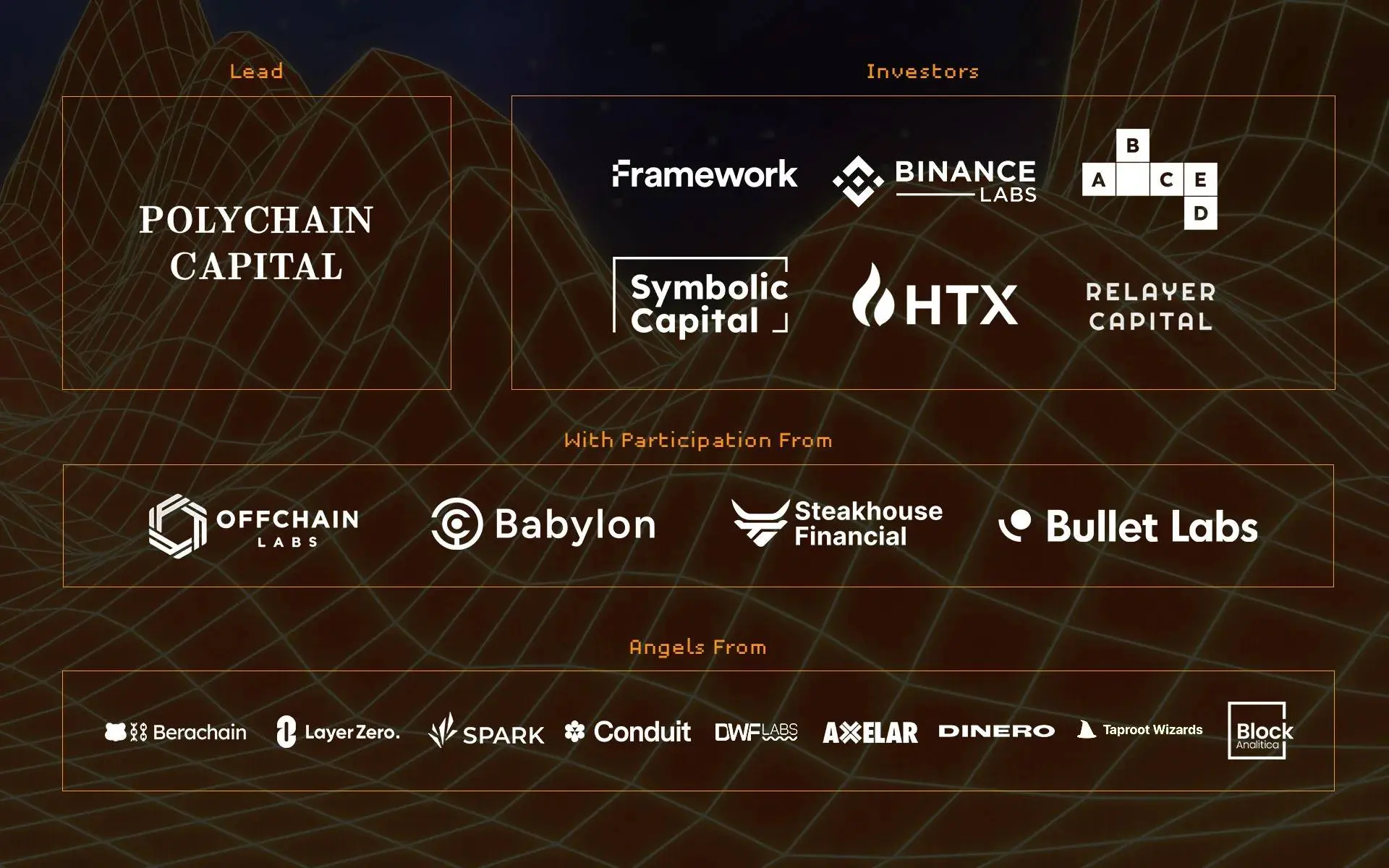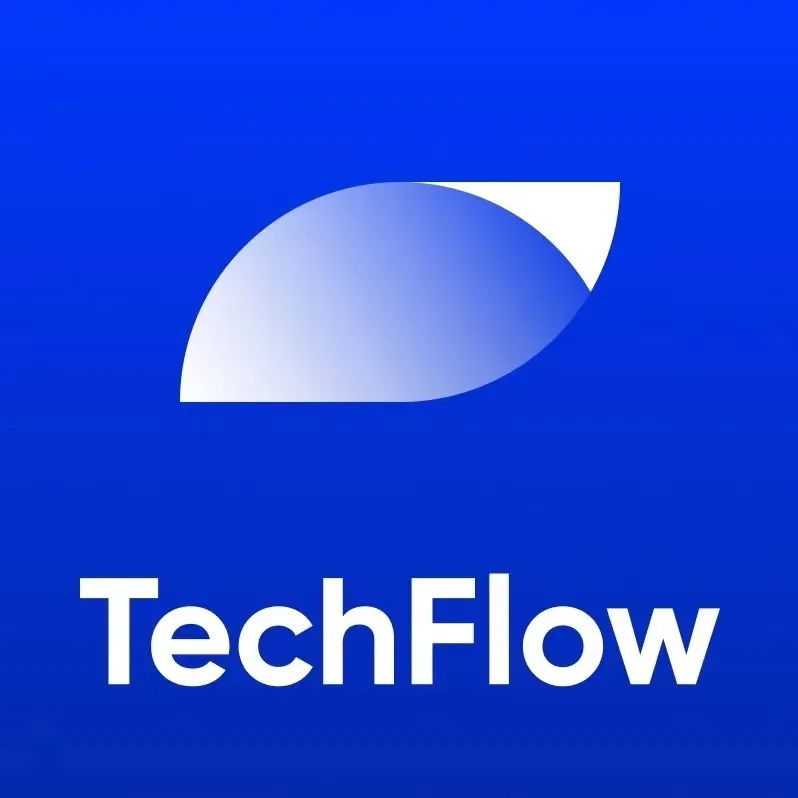Interpretation of Corn: Binance Labs invests, the first Ethereum L2 that uses Bitcoin as Gas
Author: Deep Tide TechFlow
The Bitcoin ecosystem has recently garnered significant attention.
Whether it's the controversy surrounding wBTC or the various L2 and DeFi activities within the Bitcoin ecosystem, the market remains enthusiastic about Bitcoin-related concepts.
However, this enthusiasm is more focused on Bitcoin itself, with various projects busy seeking more yield value for Bitcoin, trying to outdo each other within the Bitcoin ecosystem.
But now, Ethereum L2, which is already quite competitive, has also turned its gaze towards Bitcoin.
On August 20, a new Ethereum L2 called Corn announced the completion of a $6.7 million seed round financing, led by Polychain Capital, with participation from Binance Labs, Framework Ventures, ABCDE, Symbolic Capital, HTX Ventures, and Relayer Capital.
Developers from well-known projects like Polygon and Berachain also participated in the investment as individuals.

This L2 has a notable feature — using BTC as the Gas for the L2 mainnet through some form of mapping, while also seeking more yield within the Ethereum ecosystem for BTC.
Previously, whether it was wBTC or other DeFi projects, they approached BTC yield through asset and application methods; this is the first time an infrastructure-type L2 has treated mapped BTC assets as Gas.
At the same time, the name "Corn" also points to the crypto meme of farmers reaping corn for profits, indicating an L2 focused on maximizing BTC and related yields.
How exactly will Corn operate, and what opportunities are available for early participation and positioning?
BTC as Gas
It is important to note that Corn is currently in its early stages, with the features available on the official website still under development, and the white paper and documentation not fully online. Based on the current public information, we will provide a forward-looking analysis of the project.
First, let's take a look at what it means to use BTC as Gas.
The Corn network introduces a new tokenized Bitcoin called BTCN. This is the native Gas token of the Corn network, used to pay for network transaction fees.
So you can understand BTCN as a Bitcoin mapping in ERC-20 format, speculated to be similar to wBTC, but with some technical differences.

Why use the mapped BTCN as Gas? Some visible reasons might include:
Improving Bitcoin's usage efficiency: By converting BTC into Gas that can be used on the Ethereum L2 network, Bitcoin holders can more easily participate in the Ethereum ecosystem without needing to fully convert their assets.
Reducing transaction costs: Since BTCN is used directly on the L2 network, it can avoid the expensive Gas fees associated with transactions on the Ethereum mainnet.
Increasing Bitcoin's value capture: By bringing Bitcoin into the Ethereum ecosystem, Corn creates new value capture opportunities for Bitcoin, allowing it to be more than just a store of value but also an active medium of exchange.
Although Corn has not fully disclosed its technical details, based on existing information, we can reasonably speculate on its implementation process:
Multi-party custody: The minting rights of BTCN are not limited to a single centralized custodian but are extended to multiple custodians, smart contracts, and/or bridging protocols, enhancing security and decentralization.
Bridging mechanism: Users may need to deposit their BTC into the Corn network through a special bridging protocol. This bridging protocol will lock the native BTC and mint an equivalent amount of BTCN on the Corn network.
Smart contracts: There may be a series of smart contracts on the Corn network to manage the minting, burning, and transfer processes of BTCN. These contracts will ensure that the supply of BTCN always maintains a 1:1 ratio with the locked BTC.
Liquidity pools: Ensuring liquidity between BTCN and other assets (such as ETH or stablecoins).
Validation mechanism: A robust validation mechanism is needed to ensure the security and accuracy of the minting and burning processes of BTCN. This may involve multi-signature wallets, time locks, and other security measures.
Seeking More Yield for BTC in the Ethereum Ecosystem
How does this L2 from Corn seek more yield for BTC?
Corn has proposed an ecosystem concept called "Crop Circle." The core idea of this system is to circulate the value of BTC in various ways within the Ethereum ecosystem to generate additional yields.
In the absence of more public information, we can analyze and understand the official diagram.

First, users can stake their BTCN tokens to earn network rewards. This is similar to the staking mechanisms of other PoS networks, but the unique aspect is that the staked asset is linked to BTC.
Additionally, Corn may launch liquidity mining projects to encourage users to provide liquidity for trading pairs of BTCN with other tokens, thereby earning additional yields; at the same time, through integration with other public chains and DeFi protocols, Corn can offer users cross-chain yield opportunities, such as participating in DeFi projects on other chains.
From the information on their official Twitter and blog, Corn plans to deeply integrate with existing Ethereum DeFi protocols to provide diversified financial services for BTCN holders:
Lending: Users can use BTCN as collateral to borrow other assets on DeFi platforms or lend BTCN to earn interest.
Derivatives: Developing a derivatives market based on BTCN, such as options and perpetual contracts, to provide users with more investment and hedging tools.
Yield aggregators: Helping users optimize their BTCN yields across different DeFi protocols.
At the same time, Corn has introduced two tokens: $CORN and $popCORN, similar to the vote-escrowed (ve) model of Curve.
CORN serves as the base token, similar to CRV in Curve. Users can earn CORN through various means, including staking BTCN, providing liquidity, or participating in other ecosystem activities. $popCORN, on the other hand, is similar to veCRV and is obtained by locking $CORN.
Locking mechanism:
Users can choose to lock their $CORN for a period to earn $popCORN. The longer the locking period, the more $popCORN they will receive. This mechanism encourages users to hold and participate long-term, as a longer locking period means greater governance weight and potential rewards.
Dynamic weight: The voting weight of popCORN may decrease over time, similar to the decay mechanism of veCRV in Curve. This means users need to "re-lock" their CORN regularly to maintain maximum governance weight, further promoting active ecosystem participation.
Governance and reward distribution: Holders of $popCORN can not only participate in governance decisions of the ecosystem but may also receive additional rewards. This could include trading fee distributions, newly minted $CORN allocations, or priority participation in specific projects.
Liquidity incentives: Drawing from Curve's model, Corn may use $popCORN to determine the weights of different liquidity pools. Users holding more $popCORN can "vote" to increase the weight of a particular pool, thereby attracting more liquidity rewards to that pool.
Bribe Marketplace: Corn innovatively expands the ve model. In the Curve ecosystem, informal "bribe" markets have emerged, and Corn seems to formalize this concept and integrate it into its platform. Users may be able to participate in this market using $popCORN to influence votes or receive additional rewards.
The application of this ve model appears to enhance the utility of $CORN and $popCORN, rewarding long-term holders with more governance rights and potential yields, which in turn increases the demand and value of the tokens.
At the same time, this model provides a unique positioning and value creation pathway for BTC within the Ethereum ecosystem.
Current Participation Opportunities
Currently, Corn's testnet and tokens have not officially launched, but the official team has released some pre-launch information.
On the evening of the 21st at 11 PM, the project will hold a Space on X to discuss the details of the mainnet token airdrop. However, during the initial airdrop phase, only eligible users will be added to the eligibility list.
The criteria for this list are based on thousands of super DeFi users who have used DeFi protocols that have collaborated with Corn in the past 12 months. The specific filtering list is unknown, so it is recommended to follow their official Twitter and Space for more details.
Additionally, a social media campaign regarding Corn has also launched on Galxe, running from the 20th to the 23rd. Players need to simply follow their Twitter account and like and retweet related posts to earn points, while also joining their Discord to gain Farmer status.












